and a bonus game
Previously : Tyrant of Athens
B. Roman Empire
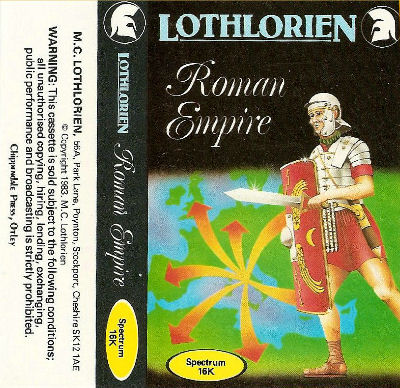
M.C. Associates’ second game is more complex than Tyrant of Athens. The game seems inspired by a 1978 game called World Power, though it could be a coincidence. World Power was designed by Joe Jaworski and published as a type-in in the February 1978 issue of Interface Age. World Power is one of those games that stood in my list of games between “maybe a BRIEF article” and “no article at all“. I am happy that Roman Empire gives me the opportunity to discuss it in a short detour.
Bonus BRIEF : World Power (1978)
World Power is a text-only game that pits North America, South America, Australia, Russia and Japan against Africa, Korea, China, Greenland and England. Those are obviously just names, as each territory is only represented as four “shores” (North, South, West, East) and a random number of “defences” composed of infantry, artillery, planes, tanks and missiles. The aim of the game is of course to conquer the 5 opposing continents, with the constraint that forces never ever replenish, except by capturing the defences of the other side when overwhelming them at a ratio of 3 to 2.
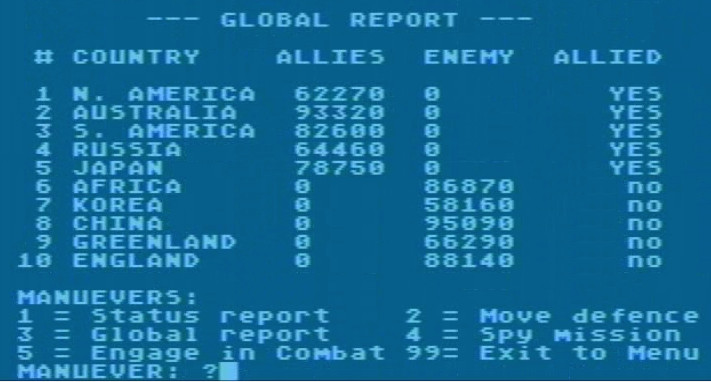
Thus described, you may believe it is an interesting game, but it is not.
- All defence types behave the same way (including missiles…),
- They don’t combine in combat (for instance, tanks may attack first until fully destroyed, then planes, then missiles, then artillery, then soldiers)
- The opposing side is totally passive (no AI at all).
Even worse, the game also fails as a puzzle: losses are proportional to the size of the defender, not the attacker, and there is one round of combat before the “capture” mentioned above. Therefore, the best strategy is to send soldiers by increments of 1000 or even 100.
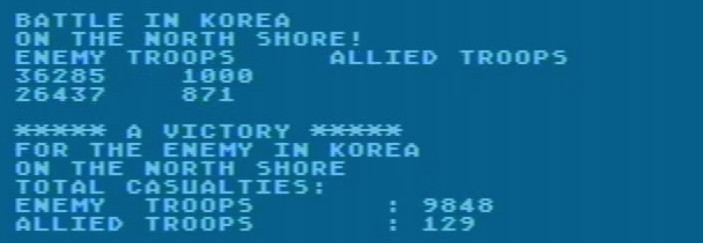
With this trick and some patience, the player can mop up one by one the four shores of each of the 5 territories, until final victory.
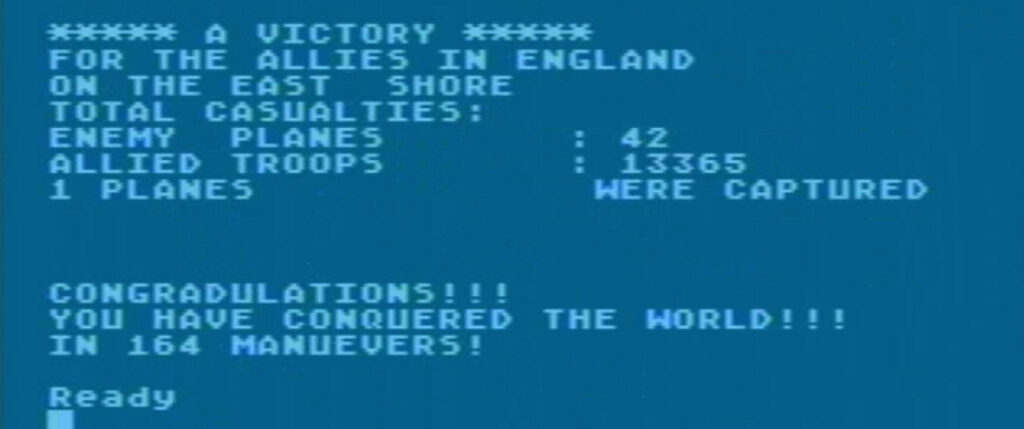
In theory, you should aim at minimizing the number of attacks it takes you to conquer the world, but come on, it is a terrible game.
And that’s all there is to say about World Power.
Back to Roman Empire. It keeps the marrow of World Power, and removes everything that was useless in World Power. There is only one type of unit : the sturdy Roman legionnaire. There are no shores but either 6 (on Spectrum, Atari) or 10 countries to conquer (in the original ZX81 version).
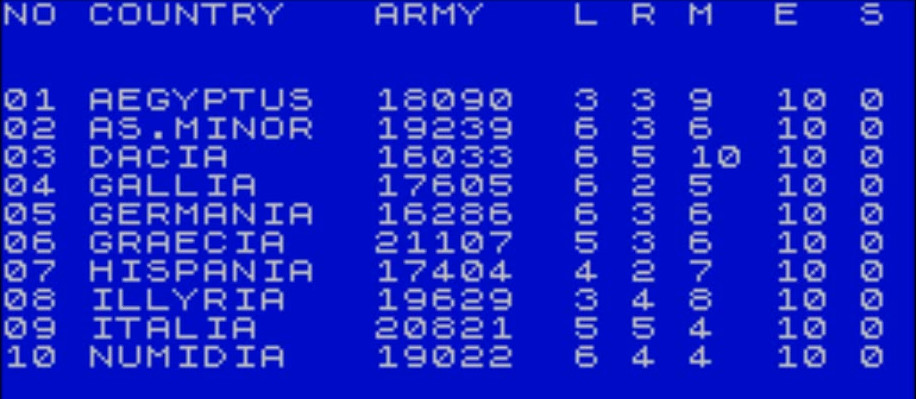
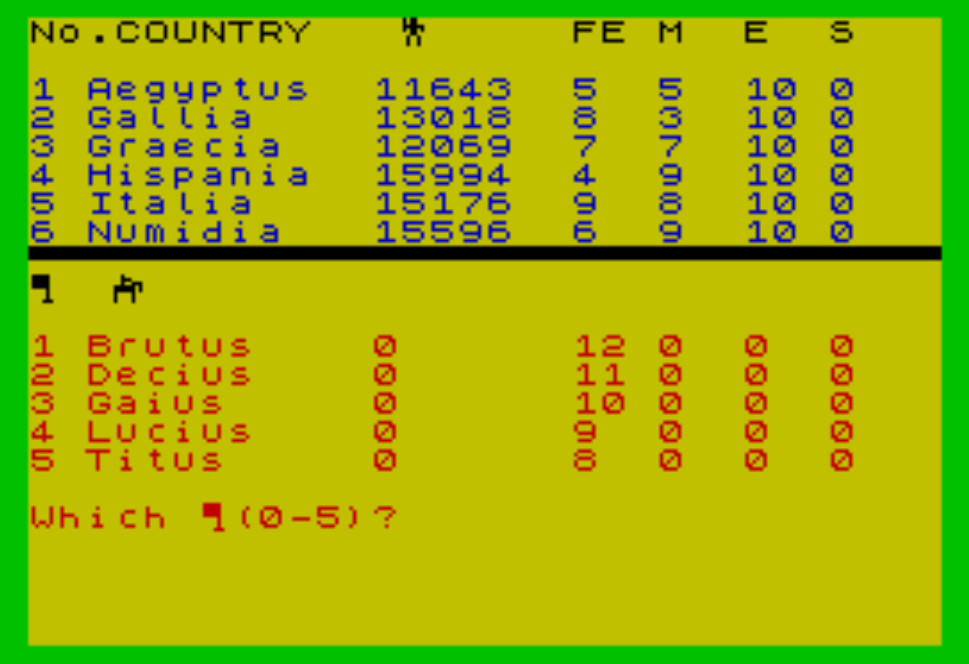
Assuming you play the ZX81 version, you have 16 legions to allocate to various armies. You also have to pick a general :

I don’t think you will ever need to use anyone below Decius. Using yourself as a general brings some risk : you can be ousted from power while you are away fighting.
Once you are satisfied with your armies, you send them to conquer, and they will slowly kill foreigners and conquer their land.
Unfortunately, you cannot build a mega army under Albinus and conquer the world one region after the other, because :
- Foreign territories grow in number every turn. On the other hand, a dead Roman is gone forever,
- Every turn they fight, your Roman legion’s energy decreases, so you need to rest them from time to time and avoid committing 10 of them where 4 would suffice,
- In any case, you need to keep at least one legion in reserve to avoid a random game over because the Barbarians attacked.
In my final game, I was well advanced, having conquered the countries with the best fighters, but I was afraid that the growth of the remaining countries was going to be impossible to beat. I had to conquer countries faster !

I decided to take a risk, and lead personally one of the attacks against Graecia, while my best General Albinus would focus on Asia Minor…

This was an unfortunate decision, and I turned out to be more a Lucullus than a Pompey after all :
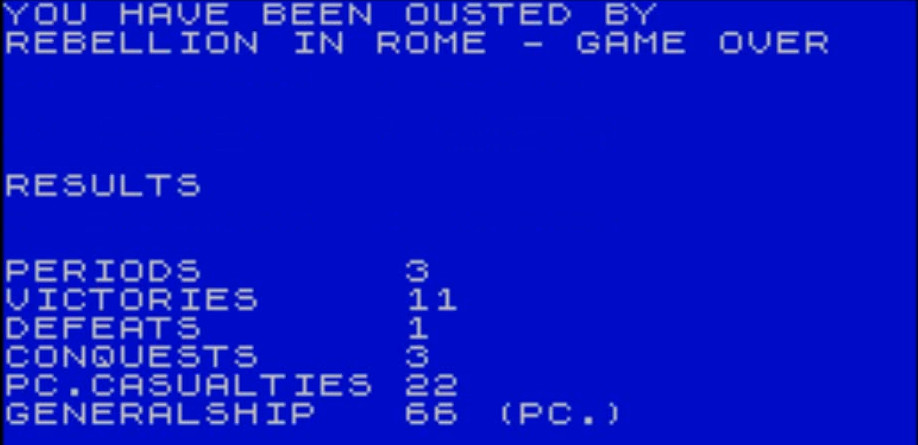
Final assessment: Totally obsolete, it feels more like a puzzle game than a strategy game. It was probably interesting in 1982, but not today.
The game received a few more reviews than Tyrant of Athens, though these were mixed. Computer and Video Games (the English Computer Gaming World) gave it a score of 4 out of 10 in all categories in June 1983, commenting “Confirmed wargamers may gel something out of this one. For the uninitiated though — it would have to have greatly improved on-screen instructions and graphics before I would reach for my wallet.” (pretty damning assessment since the game only cost 5 pounds). Personal Computer News (May 1983) is more positive, giving it a 4 out of 6 “the game is an interesting challenge, and you keep going back to it to try different solutions to the problems“.
C. Samurai Warrior
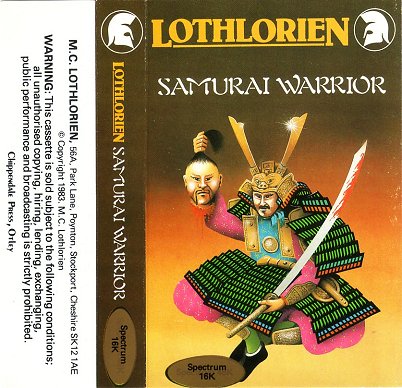
Samurai Warrior is the first game by Roger Lees and by far the weakest of the early M.C. Lothlorien games. You play one of 6 Samurais with 4 randomly generated stats :
- STatus – don’t let it reach 0 by refusing to help villages or refusing duels, that’s game over for a Samurai. High status also makes you strong against bandits,
- REputation : actually weapon skill, improved by fighting bandits,
- PHysical : Health points,
- HUnger : You lose if you reach -4, but that basically never happens, especially since villages repay your help with food,
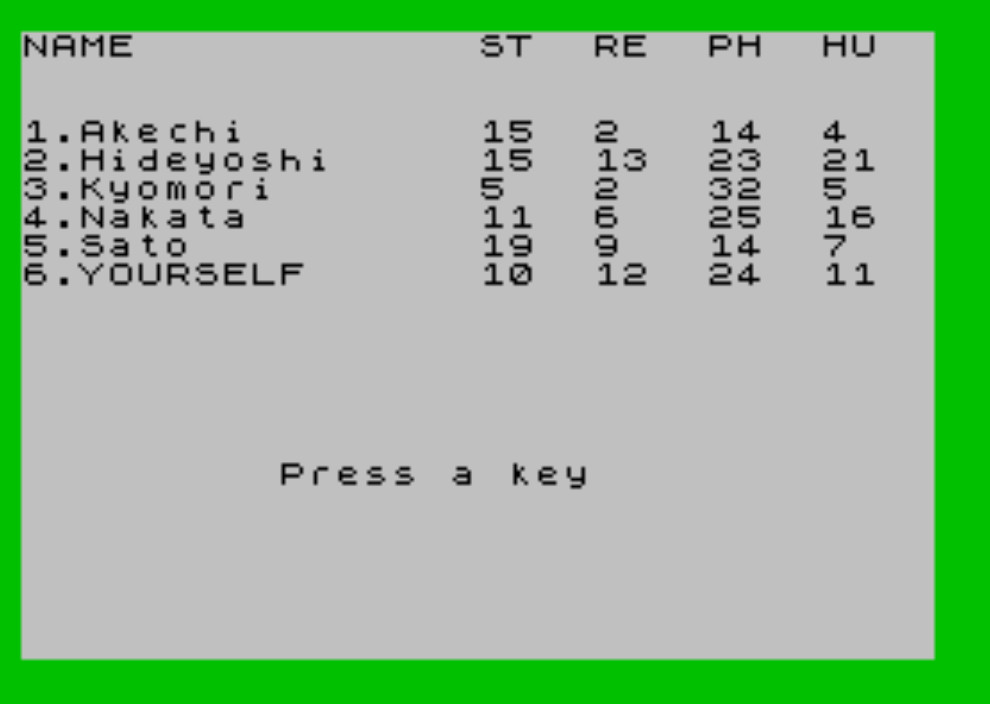
The objective is to reach a certain number of points by :
- fighting bandits,
- challenging and defeating the other samurais,
- helping a village – they will ask you to fight bandits, or to challenge and defeat another Samurai,
- committing Seppuku – when you are basically just desperate to grab those last missing points,
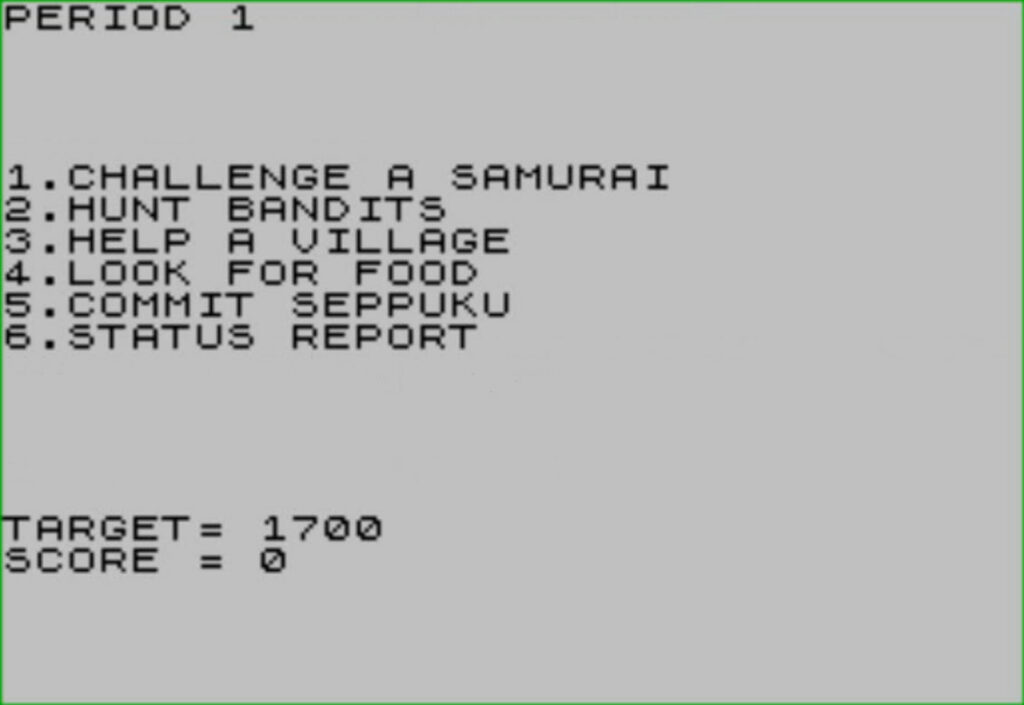
Don’t ponder what to do between helping a village, attacking bandits, and challenging Samurais too much, because every time you try one of these actions, you may be interrupted anyway… by a village requesting help, by bandits attacking you, or by a Samurai challenging you.
Actually, it is hard to find even 10 minutes to commit seppuku, as trying to do so you will often be interrupted by a samurai knocking at your door or bandits attacking you in your living room (presumably). Life in 13th century Japan is difficult.
Also, you can fail at seppuku and then die of your seppuku wounds, not earning those precious missing victory points. Even death is difficult in 13th century Japan.
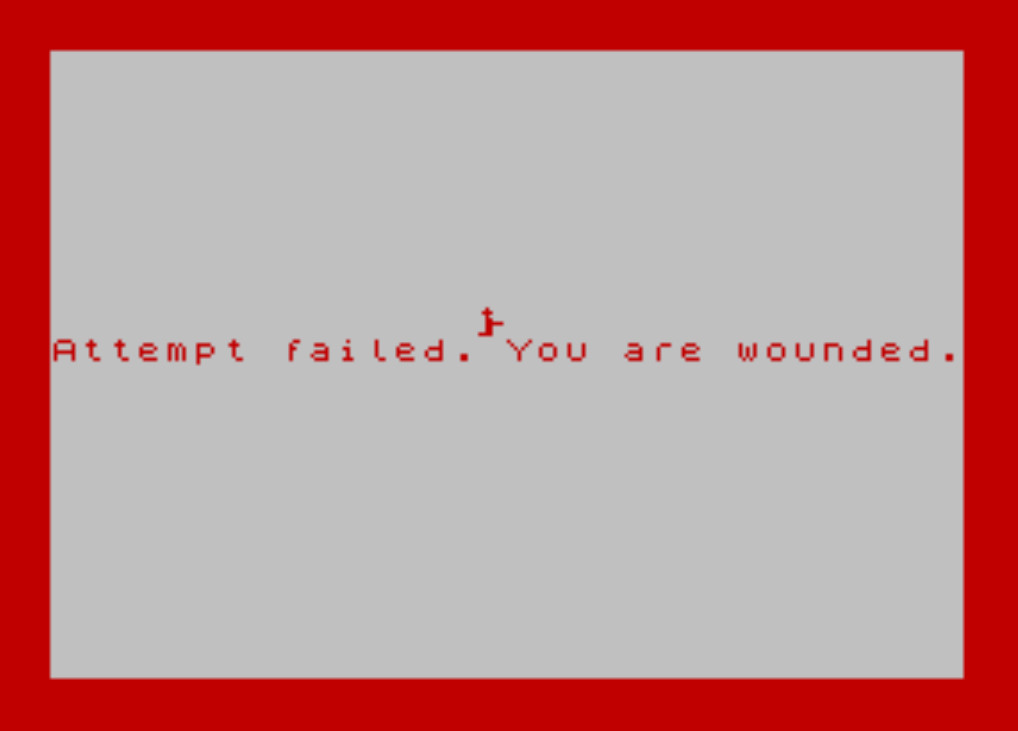
In any case, if you challenge or accept to fight another samurai, you will see a short animation, and there will be only one man standing at the end of it. If you survive and check the list of samurais after that, it will be shorter by one name.
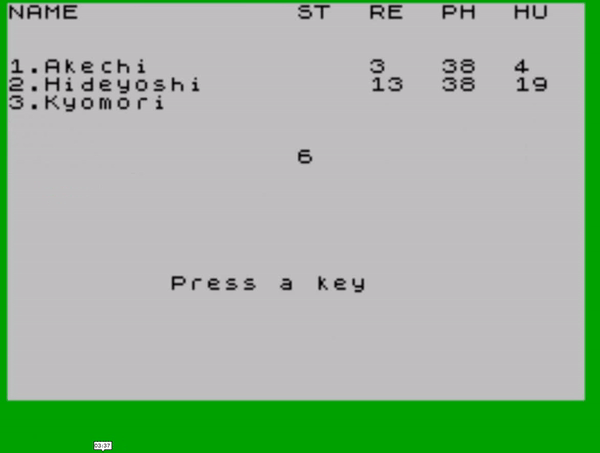
As for bandits, the game just tells you how many bandits you’ve encountered, and the result of the battle.
That’s all. I believe the game expects you to pick your battles and slowly grow in power, but you cannot refuse combat against bandits, and basically your performance is totally dependent on your starting character.
For instance, this character, starting with 3 health points, was killed by bandits before reaching his front door:
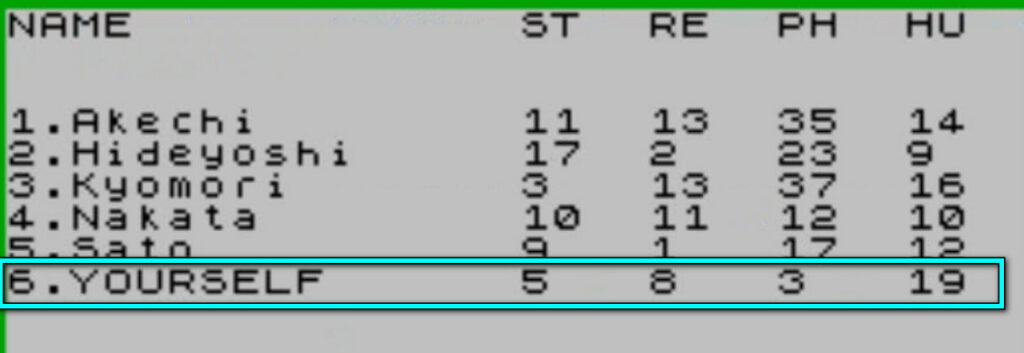
On the other hand, the character below challenged and defeated all the other samurais one after the other before breakfast:

He only failed to reach the victory threshold in points because he did not spend enough time killing bandits before slaying all his rivals and because the game showed the game-over screen before he could commit seppuku.
Final assessment : Absolutely not a wargame, barely a game, probably obsolete from launch.
The only review I could find (the generic name does not help) was in the 1984 Crash list of all Spectrum games, and shares my opinion. The game “seems pointless“.
Next : Warlord
One Comment
Failed sepukku is actually surprisingly common, it turns out – that’s why most Samurai required an assistant to make sure the job is finished. Of course, sometimes even the assistant fails, like in the infamous Mishima ritual suicide (https://en.wikipedia.org/wiki/Yukio_Mishima#Coup_attempt_and_ritual_suicide).
So yeah, not surprised that a successful ritual disembowelment is worth at least a couple hundred victory points!